Memory and Ephemeral Art: Exploring MAMBO’s Archival Investigation
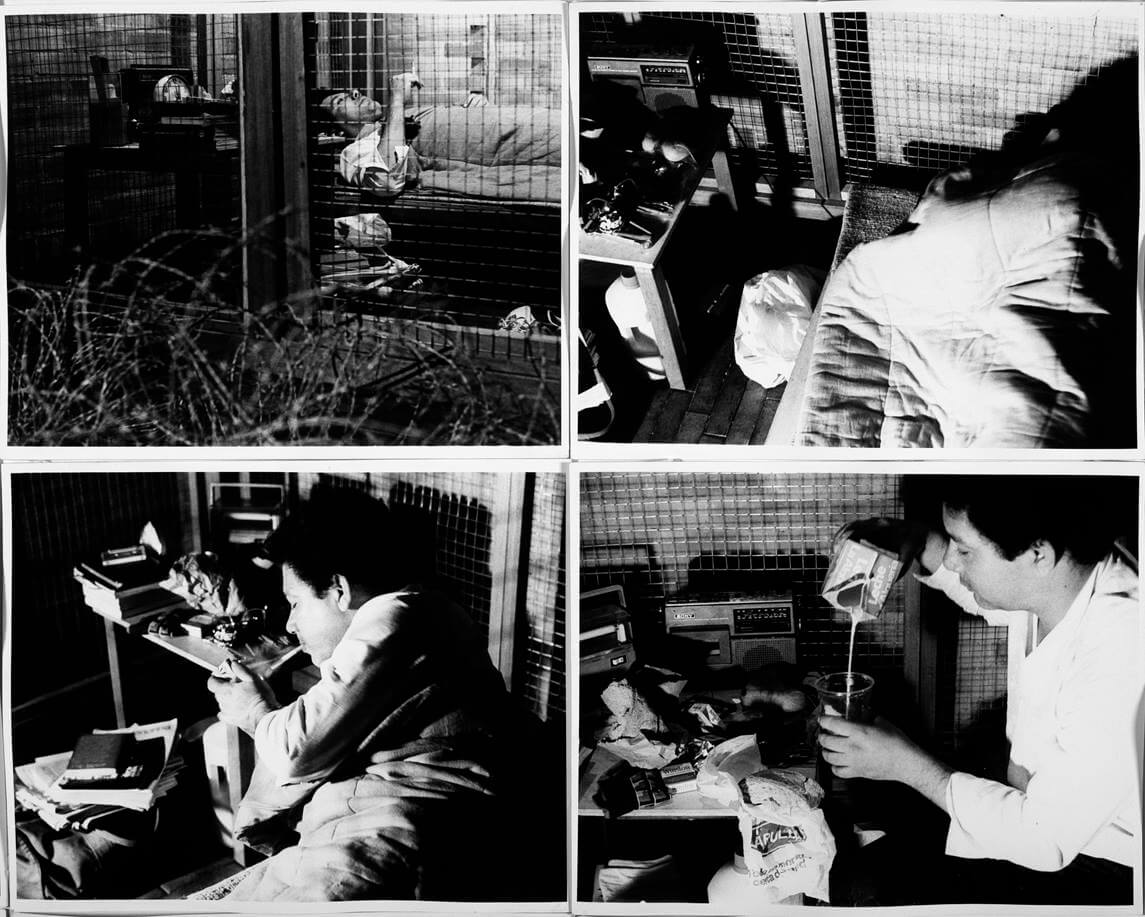
Fernando Cepeda, Trampa, 1980. Photo by Oscar Monsalve. MAMBO Photo Archive.
Article by: Sol Irene Caro
The original version of this article is in Spanish, click here to read it.
This section is presented as part of the research project Digital Futures in Museum Practices*, which explores contemporary museum practices with a special focus on the use of digital tools.
Unlike other forms of art, such as sculpture, painting, or photography, which can endure over time, performance art is characterized by its ephemeral nature, inviting reflection on memory and preservation. Being live, time-based, and largely centered on the body, performance is created in the moment, existing solely in the here and now, only to be lost to the experience of a specific audience. Its allure lies in its unrepeatable uniqueness, where ‘what is’ gradually transforms into ‘what was,’ and the fact that the original experience is a fleeting work carries the inherent risk of its perishability.
Performance art, as an artistic expression, resists the drive to create fetishized objects that feed the art market. Instead, it challenges conventional definitions of art by exploring how meaning can arise from art that defies commercialization and ownership. Yet, this very quality—its non-objecthood—poses challenges for institutions and the preservation of memory. The acts of documentation, preservation, and archiving are driven by a desire to retain a tangible memory of the ephemeral, making the notion of archiving performance art a paradox. How can one preserve something that only exists in the here and now? What does it mean to archive performance art, and what implications does this hold for writing its history?
To address the importance of archiving and documenting this art form, one must examine its history. Performance art traces back to early 20th-century avant-garde movements, particularly futurism, dadaism, and surrealism, which broke away from traditional art forms by incorporating the body and real-time action as mediums of expression. In the 1960s and 1970s, performance art gained visibility within contemporary art, serving as a platform to challenge social, political, and aesthetic conventions. Artists like Mike Parr, Allan Kaprow, Marina Abramović, and Joseph Beuys explored the potential of performative action, integrating elements such as audience participation, the use of everyday objects, and interaction with space.

Mike Parr, The Unword Performance (11 female sexual organs), 1996. MAMBO Collection.
In Colombia, performance art has served as a powerful medium for expressing the nation’s political and social tensions. One of the most significant milestones was Acción de duelo by María Teresa Hincapié in 1989, where the artist conducted an extended ritual to explore collective mourning for Colombia’s pervasive violence. Another key development was the Cali Performance Festival, a pivotal platform for performance art during the 1990s. Additionally, artists like Rosemberg Sandoval, with his raw and politically charged public interventions, have profoundly influenced the trajectory of Colombian performance art.
A crucial moment in Colombian performance art history occurred in 1981 with the exhibition Non-Objectual Art and Action Art at Medellín’s Museum of Modern Art (MAMM). This exhibition, organized by curator Alberto Sierra and led by critic Juan Acha, was part of the First Latin American Colloquium on Non-Objectual Art and Urban Art, bringing together artists and cultural organizers from the region who sought to explore experiential practices and performance, moving beyond traditional art object-centered narratives. The goal was to challenge modern art conventions by prioritizing space and action over static contemplation, redefining art as a critical and aesthetic act. This approach transformed art into a medium of meaning-making through direct experience, moving beyond mere exhibition to engage the viewer on a more profound level.
At the MAMBO Research Center, we explore the archives to uncover other key moments in the history of performance art in Colombia, such as the Salón Atenas, held at the museum. The first of its nine editions opened in 1975 and marked a significant milestone in establishing a meaningful platform for performance art, featuring videos and photographs of actions by artists like Rosa Navarro and María Evelia Marmolejo. This approach underscored the potential of performance as a legitimate and multidimensional art form. By incorporating performance into its programming, the Salón Atenas not only validated this practice within the Colombian art scene but also contributed to its recognition and growth, becoming a foundational reference for performative art and enriching the contemporary artistic landscape of the country.
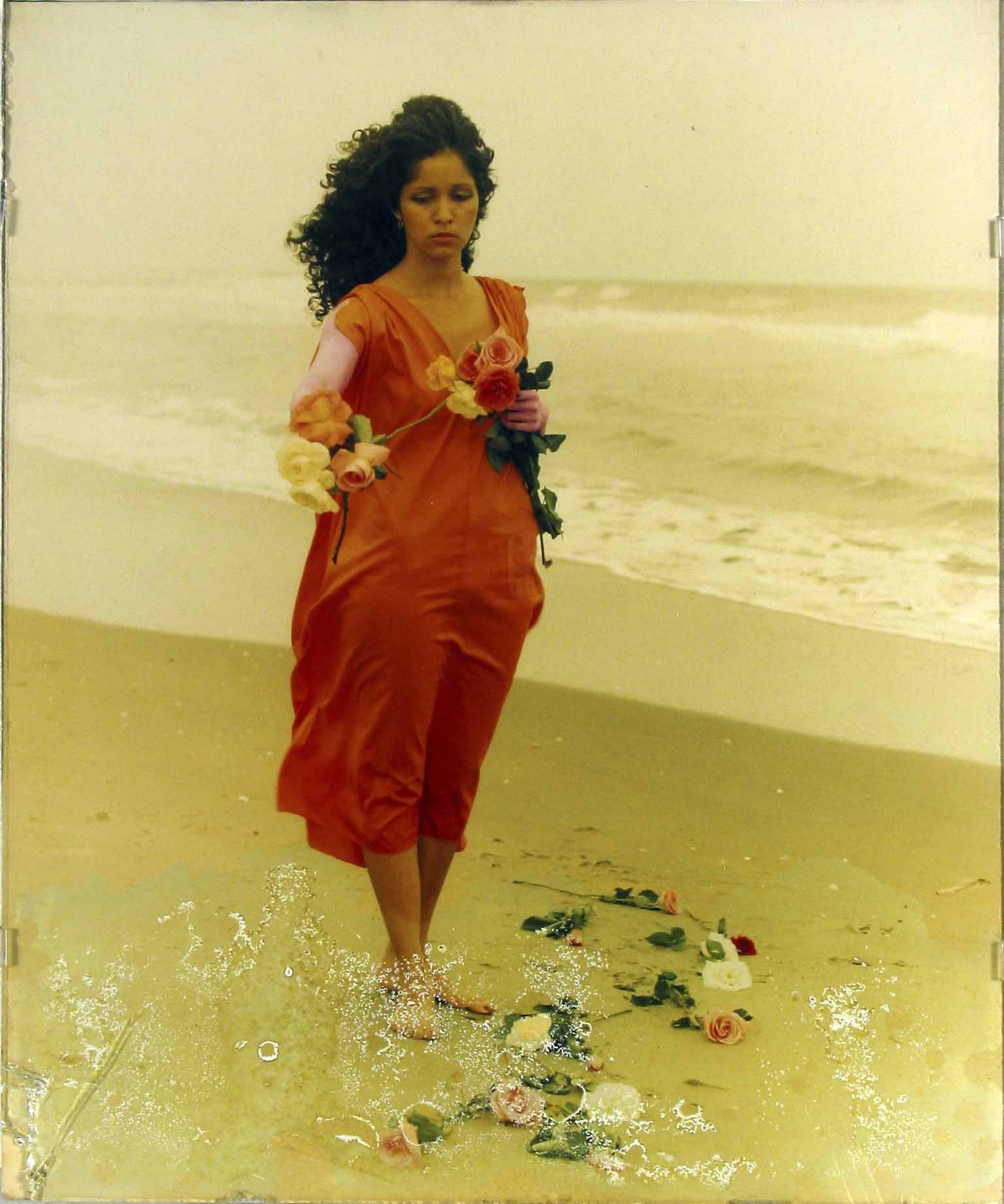
Rosa Navarro, Rosa de los vientos, 1983. MAMBO Collection.
At the Salón Atenas in 1981, Fernando Cepeda presented his work Trampa. For two weeks, he lived on the first floor of the MAMBO, offering viewers an intimate look into his daily life, while Óscar Monsalve documented the performance through photography. The images from this performance now form part of the Museum’s photographic archive.

Fernando Cepeda, Trampa, 1980. Photo by Oscar Monsalve. MAMBO Photo Archive.
Documentation in performance art is essential for expanding the possibilities of analysis, reflection, understanding, and research of these works. This need has given rise to the subgenres of video performance and photo performance, exemplified by Vida eterna (1978), a work by Colombian artist Antonio Inginio Caro that is part of the MAMBO Collection. The photographs of his performances are not the artworks themselves, but they were crucial for the dissemination and impact these works achieved. In the 1970s, Inginio Caro incorporated religious symbols into his work, engaging with them through private, ritualistic meditation. Yet, without the photographic documentation, these works would not have reached the level of influence they ultimately did.
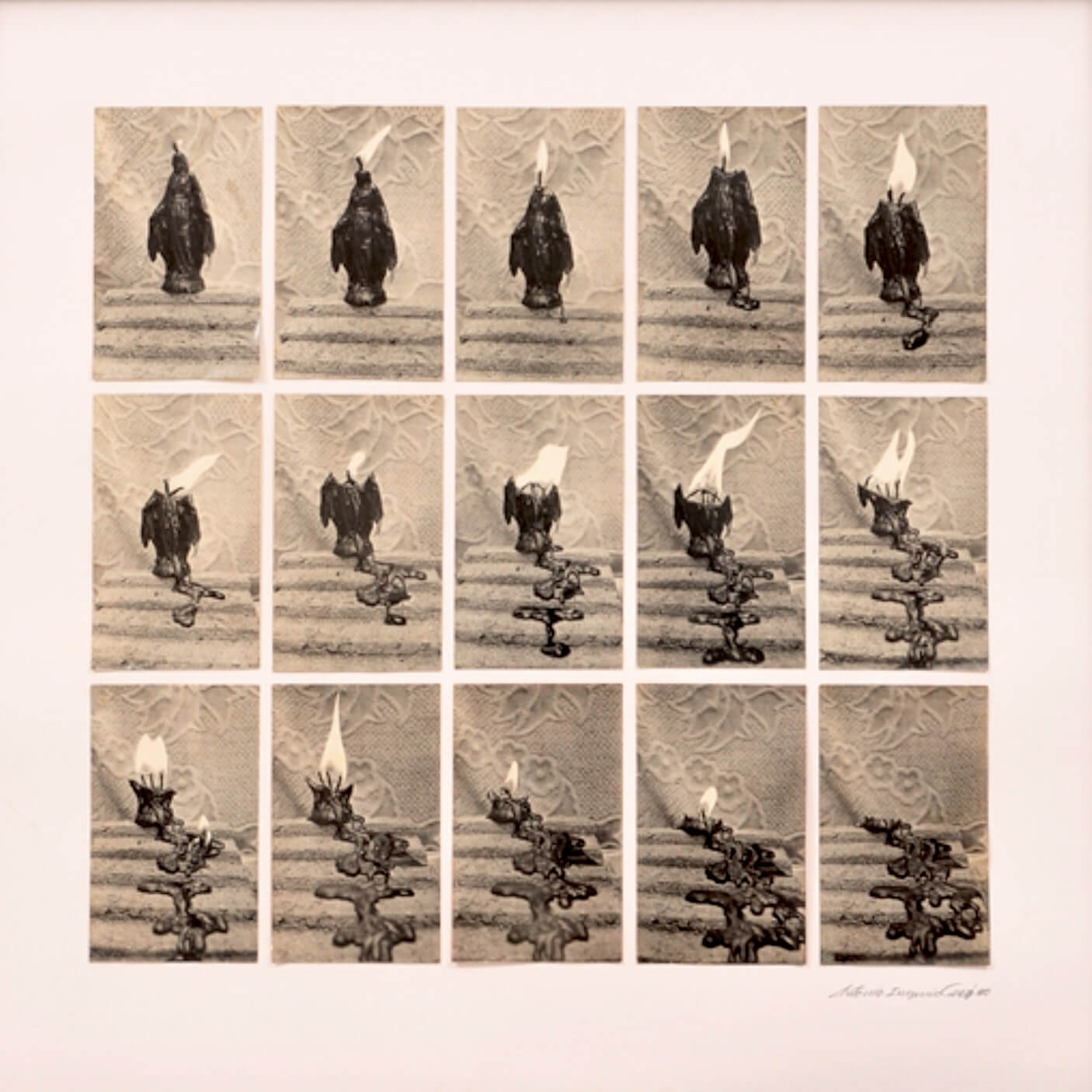
Antonio Inginio Caro, Vida Eterna (Fuego eterno) [Detail], 1978. MAMBO Collection.
In recent years, MAMBO has emphasized the essential role of performance in art history through retrospective exhibitions such as La resistencia íntima: Performances 1971-2023 by Mike Parr, Cantándole a las plantas. Performances 2001-2023 by Guatemalan artist Naufus Ramírez-Figueroa, and Rosemberg Sandoval: Performer (1980-2023). These exhibitions have highlighted the evolution and impact of performative art over time.
Most recently, in 2023, Performer, the first comprehensive exhibition dedicated to Rosemberg Sandoval, took place at MAMBO, showcasing over 50 works from his career. This exhibition explored four decades of work in which Sandoval challenged the boundaries between art and Colombia’s social reality, marked by violence, poverty, and exclusion. Drawing on performance theories and the Latin American sociopolitical context, Sandoval used raw materials such as hair, blood, and rubble to denounce injustices inflicted by political and economic systems, creating radical art that reflects on aesthetics and marginalization. During the exhibition opening, Sandoval performed his piece Rose Rose.
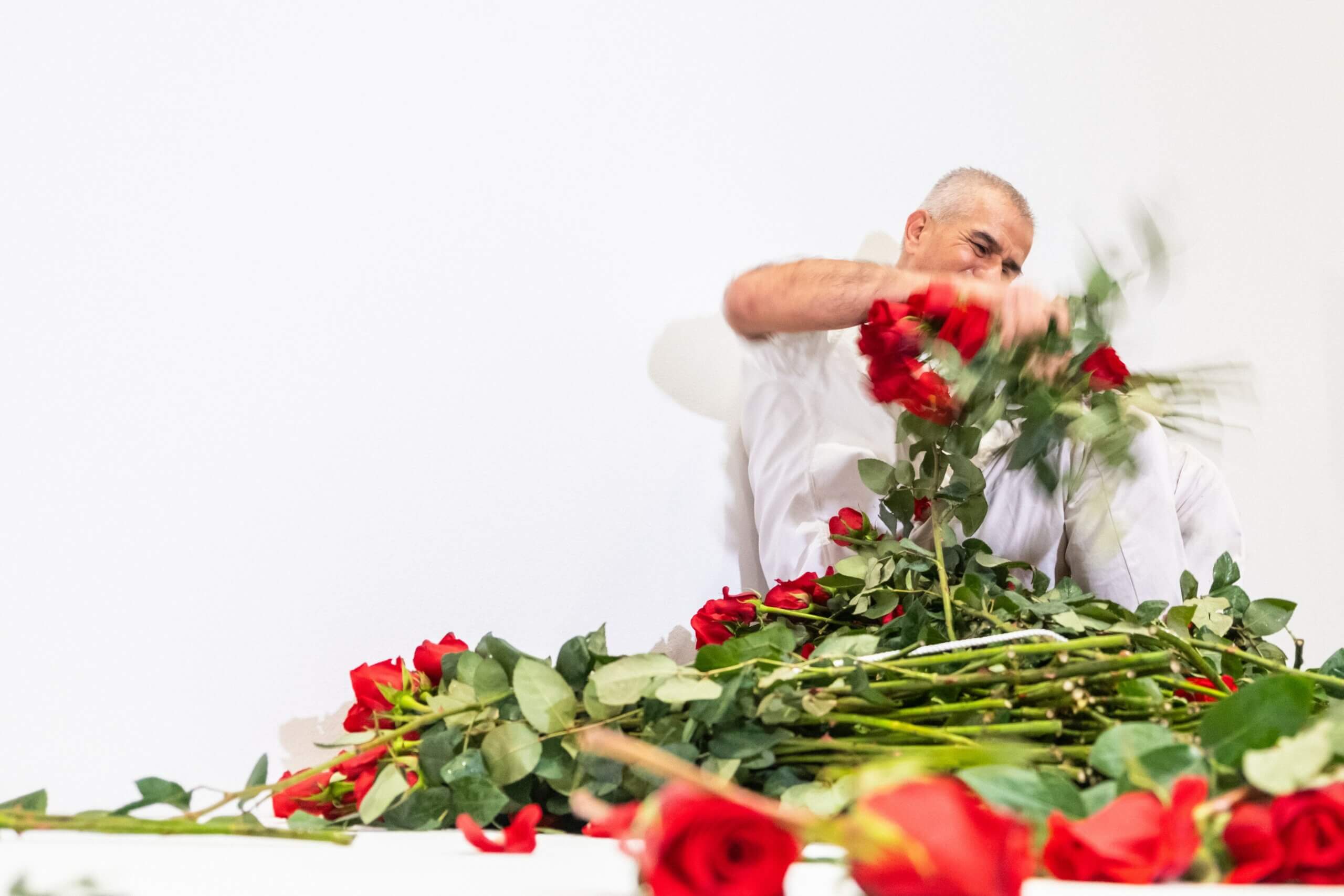
Rose Rose (2023) by Rosemberg Sandoval at the Bogota Museum of Modern Art. Photo by Gregorio Díaz.
During the same exhibition cycle, Australian artist Mike Parr made a generous donation of over 120 works to MAMBO as part of his exhibition La resistencia íntima: Performances 1971-2023. This donation included videos, recordings, drawings, and installations, all of which encapsulate his radical exploration of the body and mind’s limits through performance. Like Sandoval, Parr presented a live performance, Australian Flag Blind, at the exhibition opening, in which he painted the Australian flag while blindfolded. For this occasion, Parr requested that the documentation be conducted by a photographer who was also blindfolded, underscoring how documentation can capture and convey the ephemeral essence of performance, preserving its meaning across time.
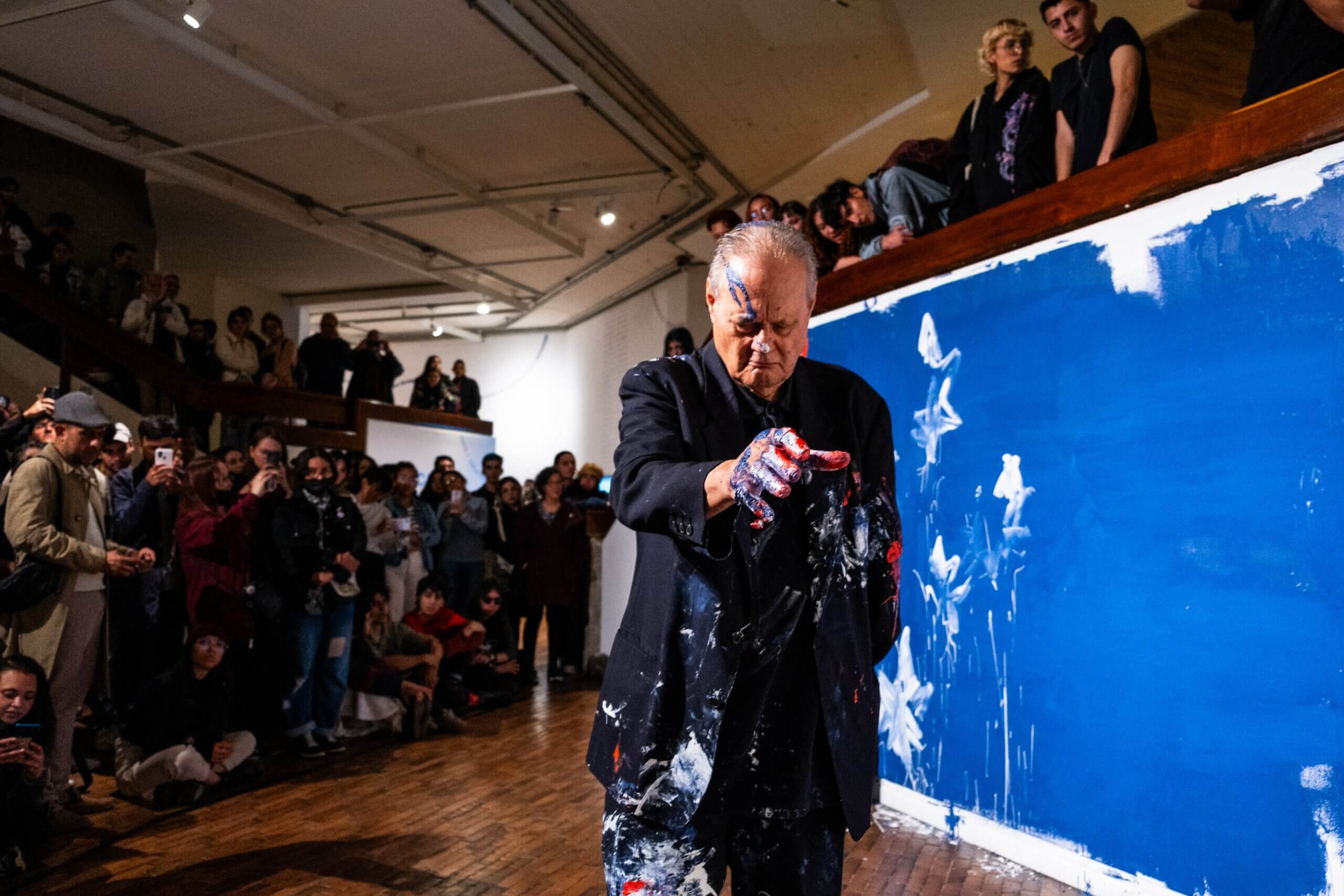
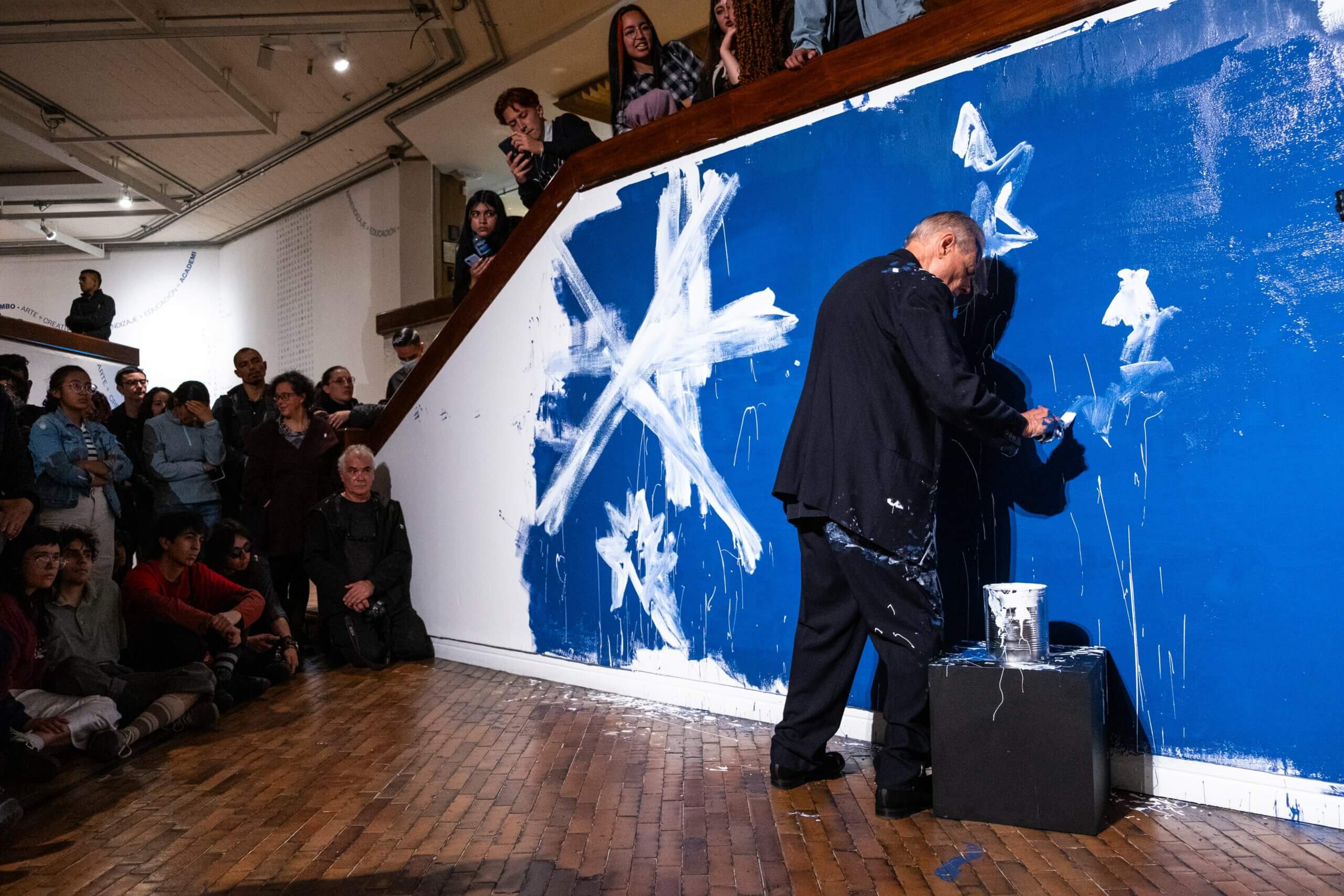
Mike Parr, 2023. Australian Flag Blind. Performance at MAMBO. Photo by Gregorio Díaz.
The importance of documentation in performance art stems from its ephemeral nature, which challenges the preservation of memory and history. Unlike traditional art forms, where objects can endure over time, performance exists only within a specific context, and its essence fades with the moment. For this reason, photographic archives at institutions like MAMBO play a vital role, serving as essential tools for maintaining a tangible trace of these artistic experiences and enabling their analysis and reflection over time.
*Digital Futures in Museum Practices is a research project led by Susana Vargas-Mejia and supported by the New Frontiers in Research Fund of the Government of Canada [NFRF-2022-00245].

References
[1] Birkin, Jane. 2015. “Art, Work, and Archives: Performativity and the Techniques of Production.” Archive Journal, noviembre. https://eprints.soton.ac.uk/398703/.
[2] Chotrani, Chelsea. 2018. “The Importance of Documenting & Archiving the Performing Arts.” ASEF Culture 360.
[3] Jones, Amelia. 1997. “‘Presence’ in Absentia: Experiencing Performance as Documentation.” Art Journal 56, no. 4: 11. https://doi.org/10.2307/777715.
[4] León, María. 2022. “Ni reciente, ni importado: Historia del performance en Colombia.” Banrepcultural.org. https://www.banrepcultural.org/biblioteca-virtual/credencial-historia/numero-320/ni-reciente-ni-importado-historia-del-performance-en-colombia.
[5] Montijano Cañellas, Marc. 2017. “Documentation of Performance. Reflections on How to Materialize Absence in Today’s Action Art: First Approximation.” DOAJ (DOAJ: Directory of Open Access Journals), enero, 115–24. https://doi.org/10.48260/ralf.extra1.43.
[6] “PERFORMANCE ARCHIVING PERFORMANCE.” 2024. Newmuseum.org. https://www.newmuseum.org/pages/view/performance-archiving-performance.
